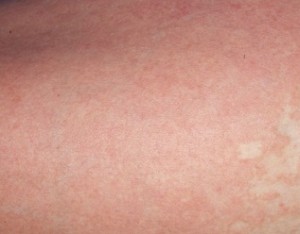Phototherapy has been proven to be effective in the treatment of psoriasis. Even with just the use of handheld UVB phototherapy lamps, many cases of psoriasis have greatly improved. However, there are actually some ways in which you can increase the effects of phototherapy on psoriasis.
To advance the effects of phototherapy, patients with psoriasis may be ordered to take a tar bath before exposing themselves to UV light. The physician may also prescribe additional topical agents that would be used with UVB therapy.
Soaking in warm water for 30 minutes before phototherapy can also loosen the psoriatic flakes, allowing more UV light to penetrate the skin.
 Provided that the right dose is given, UVB therapy can clear psoriasis in five to six weeks.
Provided that the right dose is given, UVB therapy can clear psoriasis in five to six weeks.
A clearance initiated by UV therapy can range from a few days to a few years, depending on each patient and his/her response to a particular UVB regimen. Typically, it will take 20 to 30 sessions to dispel psoriasis, and the average number of treatments is the same whether they are performed three, five, or seven times a week. But, treatment made less than three times per week generally bring in an insignificant response. Therefore, it is essential to understand that treatment given rarely, or stopped early, are two causes of treatment failure.
As soon as the skin clears, UV treatment can be stopped, and resumed only when the lesions recur. But then again, those who have phototherapy regularly, even in the absence of lesions, appear to relish lengthier plaque-free periods.
There is information indicating that UVB maintenance can increase the remission time. This report presented that even when administered at a modest frequency (an average of six sessions per month), UV therapy increases the length of remission by at least 45 days.
Effective treatment also depends on the skills of the therapist. If not enough UVB is afforded, the patient may only get a good tan, but no improvement of symptoms. If given too much, too soon, the patient may experience itchiness and painful burns in the skin.
Folliculitis can occur if tar is used with UVB. This is when skin pores are clogged with tar and minute pimple-like flare-ups appear on the treated skin. These will disappear; but in general, this means that the tar is being wrongly applied.
Like with natural sunlight, overexposure to UV light can trigger premature aging and skin cancer, particularly in those with fair skin or a family history of the disease. Hence, in the course of treatment, the patient should be wary of any skin growth that increases in size, or a skin injury that doesn’t heal. These may be indicative of skin cancer, and should be reported to a doctor right away.

